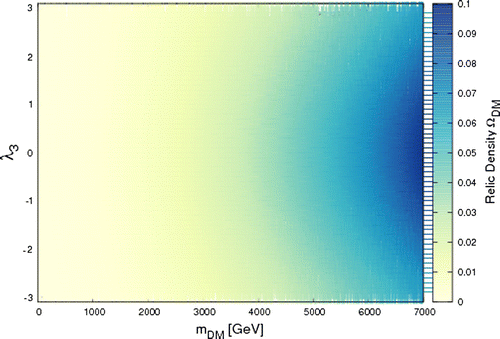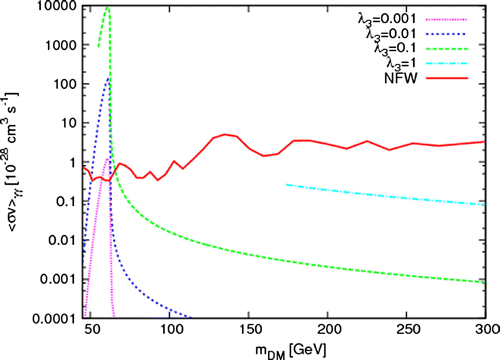Figures & data
Figure 1. Relic density as a function of DM mass for all the valid values of . The shaded cyan panel indicates regions in which
particles contribute more than 10 per cent of dark matter density.

Figure 2. The relic density plot in and DM mass plane. The shaded blue region leads to more participation in relic density.

Figure 3. Shaded areas depict ranges of parameter space in mass of DM and coupling plane which are consistent with experimental measurements of
, upper limit on
(indirect detection) and
(direct detection).

Figure 4. The thermal average annihilation cross section of (DM) to
as a function of the DM mass for several values of
. The solid red lines shows the upper limits on annihilation cross section which have borrowed from Ackermann et al. (Citation2013).

